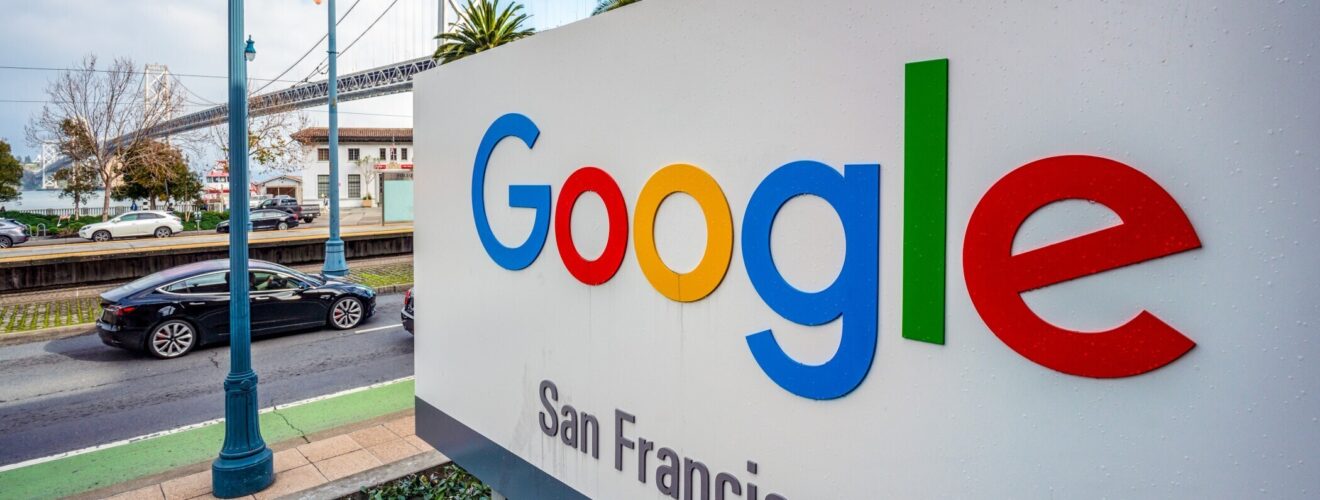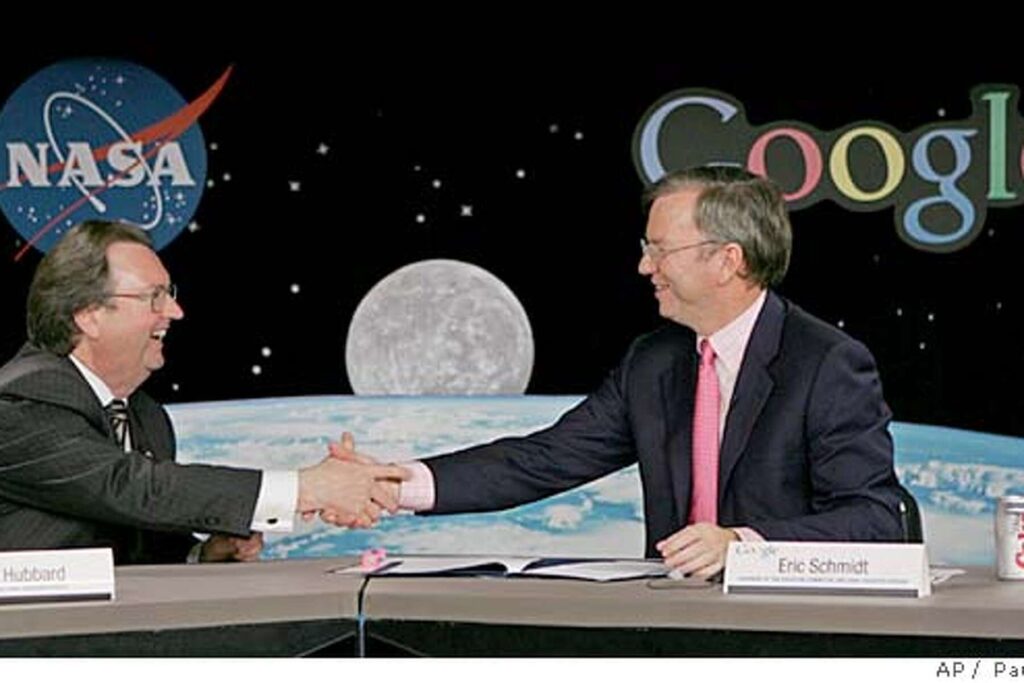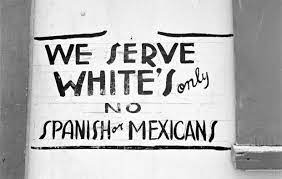Knows About Google History

The Google story begins in 1995 at Stanford University. Larry Page was considering Stanford for grad school and Sergey Brin, a student there, was assigned to show him around.
By some accounts, they disagreed about nearly everything during that first meeting, but by the following year they struck a partnership. Working from their dorm rooms, they built a search engine that used links to determine the importance of individual pages on the World Wide Web. They called this search engine Backrub.
Founder of Google
- Larry Page
- Sergey Brin
Name
The name “Google” originated from a misspelling of “googol”, which refers to the number represented by a 1 followed by one-hundred zeros. Page and Brin write in their first paper on PageRank. “We chose our systems name, Google, because it is a common spelling of googol, or 10100 and fits well with our goal of building very large-scale search engines.”
There are uses of the name going back at least as far as the creation of the comic strip character Barney Google in 1919. British children’s author Enid Blyton used the phrase “Google Bun” in The Magic Faraway Tree (published 1941) and The Folk of the Faraway Tree (published 1946), and called a clown character “Google” in Circus Days Again (published 1942). There is also the Googleplex Star Thinker from Douglas Adams’ The Hitchhiker’s Guide to the Galaxy. In March 1996, a business called Groove Track Productions applied for a United States trademark for “Google” for various products including several categories of clothing, stuffed toys, board games, and candy. The firm abandoned its application in July 1997.
In the Beginning
Google has its origins in “BackRub”, a research project that was begun in 1996 by Larry Page and Sergey Brin when they were both PhD students at Stanford University in Stanford, California. The project initially involved an unofficial “third founder”, Scott Hassan, the lead programmer who wrote much of the code for the original Google Search engine, but he left before Google was officially founded as a company, Hassan went on to pursue a career in robotics and founded the company Willow Garage in 2006. Craig Nevill-Manning was also invited to join Google at its formation but declined and then joined a little later on.
In the search of a dissertation theme, Larry Page had been considering among other things exploring the mathematical properties of the World Wide Web, understanding its link structure as a huge graph. His supervisor, Terry Winograd, encouraged him to pick this idea (which Larry Page later recalled as “the best advice I ever got”) and Larry Page focused on the problem of finding out which web pages link to a given page, based on the consideration that the number and nature of such backlinks was valuable information about that page (with the role of citations in academic publishing in mind). Page told his ideas to Hassan, who began writing the code to implement Page’s ideas.
The research project was nicknamed “BackRub”, and it was soon joined by Brin, who was supported by a National Science Foundation Graduate Fellowship. The two had first met in the summer of 1995, when Page was part of a group of potential new students that Brin had volunteered to give a tour around the campus and nearby San Francisco. Both Brin and Page were working on the Stanford Digital Library Project (SDLP). The SDLP’s goal was “to develop the enabling technologies for a single, integrated and universal digital library” and it was funded through the National Science Foundation, among other federal agencies. Brin and Page were also part of a computer science research team at Stanford University that received funding from Massive Digital Data Systems (MDDS), a program managed for the Central Intelligence Agency (CIA) and the National Security Agency (NSA) by large intelligence and military contractors.
Page’s web crawler began exploring the web in March 1996, with Page’s own Stanford home page serving as the only starting point. To convert the backlink data that is gathered for a given web page into a measure of importance, Brin and Page developed the PageRank algorithm. While analyzing BackRub’s output which, for a given URL, consisted of a list of backlinks ranked by importance, the pair realized that a search engine based on PageRank would produce better results than existing techniques (existing search engines at the time essentially ranked results according to how many times the search term appeared on a page).
Convinced that the pages with the most links to them from other highly relevant Web pages must be the most relevant pages associated with the search, Page and Brin tested their thesis as part of their studies and laid the foundation for their search engine.[16] The first version of Google was released in August 1996 on the Stanford website. It used nearly half of Stanford’s entire network bandwidth.
Financing and public offering
The first funding for Google as a company was secured in August 1998 in the form of a US$100,000 contribution from Andy Bechtolsheim, co-founder of Sun Microsystems, given to a corporation which did not yet exist
In October 2003, while discussing a possible initial public offering of shares (IPO), Microsoft approached the company about a possible partnership or merger.[85] The deal never materialized. In January 2004, Google announced the hiring of Morgan Stanley and Goldman Sachs Group to arrange an IPO. The IPO was projected to raise as much as $4 billion.
There were concerns that Google’s IPO would lead to changes in company culture. Reasons ranged from shareholder pressure for employee benefit reductions to the fact that many company executives would become instant paper millionaires.[91] As a reply to this concern, co-founders Brin and Page promised in a report to potential investors that the IPO would not change the company’s culture.[92] The company was listed on the NASDAQ stock exchange under the ticker symbol GOOG. When Alphabet was created as Google’s parent company, it retained Google’s stock price history and ticker symbol.
Advertising
Google generates most of its revenues from advertising. This includes sales of apps, purchases made in-app, digital content products on Google and YouTube, Android and licensing and service fees, including fees received for Google Cloud offerings. 46% of this profit was from clicks (cost per clicks), amounting to US$109,652 million in 2017. This includes three principal methods, namely AdMob, AdSense (such as AdSense for Content, AdSense for Search, etc.) and DoubleClick AdExchange.
In addition to its own algorithms for understanding search requests, Google uses technology from its acquisition of DoubleClick, to project user interest and target advertising to the search context and the user history. In 2007, Google launched “AdSense for Mobile”, taking advantage of the emerging mobile advertising market.
Search Engine

Google indexes billions of web pages to allow users to search for the information they desire through the use of keywords and operators. According to comScore market research from November 2009, Google Search is the dominant search engine in the United States market, with a market share of 65.6%. In May 2017, Google enabled a new “Personal” tab in Google Search, letting users search for content in their Google accounts’ various services, including email messages from Gmail and photos from Google Photos.
Google launched its Google News service in 2002, an automated service which summarizes news articles from various websites. Google also hosts Google Books, a service which searches the text found in books in its database and shows limited previews or and the full book where allowed.
Google expanded its search services to include shopping (launched originally as Froogle in 2002), finance (launched 2006), and flights (launched 2011).
Partnership

Google has worked with several corporations, in order to improve production and services. On September 28, 2005, Google announced a long-term research partnership with NASA which would involve Google building a 1,000,000-square-foot (93,000 m2) R&D center at NASA’s Ames Research Center. NASA and Google are planning to work together on a variety of areas, including large-scale data management, massively distributed computing, bio-info-nano convergence, and encouragement of the entrepreneurial space industry. The new building would also include labs, offices, and housing for Google engineers. In October 2006, Google formed a partnership with Sun Microsystems to help share and distribute each other’s technologies. As part of the partnership Google will hire employees to help the open source office program OpenOffice.org.








